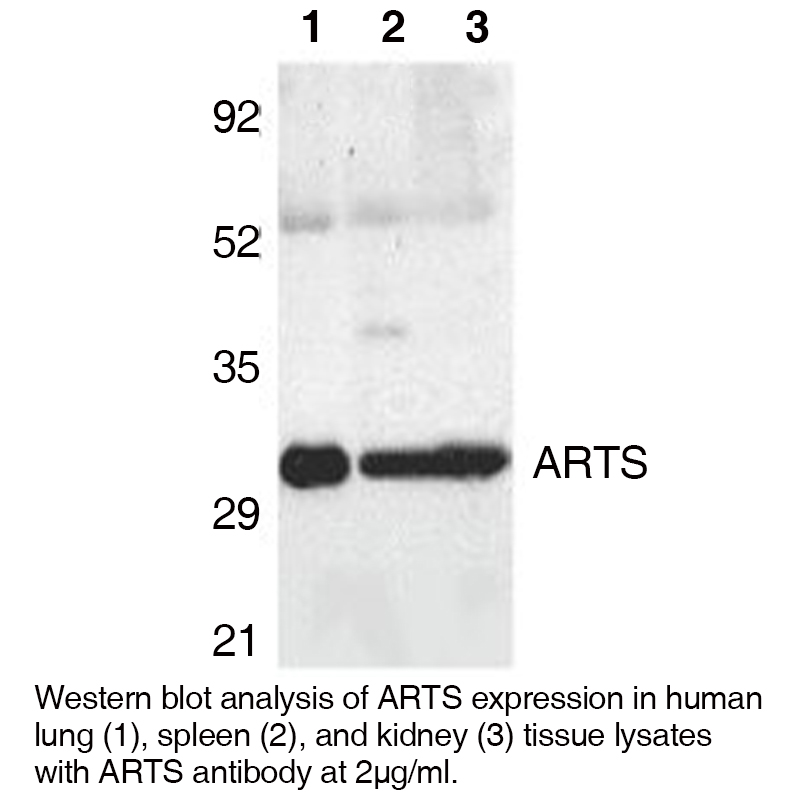Anti-Human Apoptosis Related Protein (NT) (ARTS)
| Code | Size | Price |
|---|
| LEI-A191-20ug | 20 ug | £199.00 |
Quantity:
| LEI-A191-0.1mg | 0.1 mg | £591.00 |
Quantity:
Prices exclude any Taxes / VAT
Overview
Host Type: Rabbit
Antibody Clonality: Polyclonal
Regulatory Status: RUO
Target Species: Human
Applications:
- Immunohistochemistry- Paraffin Embedded (IHC-P)
- Western Blot (WB)
Shipping:
Ambient
Storage:
This polyclonal antibody is stable for at least one week when stored at 2-8°C. For long term storage aliquot in working volumes without diluting and store at -20°C in a manual defrost freezer. Avoid Repeated Freeze Thaw Cycles.
Images
Further Information
Concentration:
0.5 mg/ml
Conjugate/Tag/Label:
Purified No Carrier Protein
Format:
This polyclonal antibody is formulated in phosphate buffered saline (PBS) pH 7.4 containing 0.02% sodium azide as a preservative.
Formulation:
This polyclonal antibody is formulated in phosphate buffered saline (PBS) pH 7.4 containing 0.02% sodium azide as a preservative.
Immunogen:
PN:A192
Long Description:
Apoptosis is related to many diseases and development. Mitochondrial proteins, such as cytochrome c, Apaf-1, and AIF play important role in apoptosis. A novel mitochondrial septin-like protein was identified recently and designated ARTS for apoptosis related protein in TGF-b signaling pathway (1). ARTS that is encoded by the human septin H5/PNUTL2/CDCrel2b gene (1-4) is located to mitochondria and translocates to the nucleus when apoptosis occurs. ARTS is expressed in many tissues. It enhances cell death induced by TGF-b and, to a lesser extent, by other apoptotic agents, such as TNF-a and Fas ligand.
Target:
ARTS
References
1. Larisch, S. et al. (2000) Nat Cell Biol 2(12):915 2. Depraetere, V. (2000) Nat Cell Biol. 2(12):E219 3. Paavola, P. et al. (1999) Genomics 55(1):122 4. Zieger, B. et al. (2000) Gene 261(2):197
Related Products
| Product Name | Product Code | Supplier | ARTS (NT) Blocking Peptide | LEI-A192 | Leinco Technologies | Summary Details | |||||||||||||||||||||||||||||||||||||||||||||||||||||||||||||||||||||||||||||||||||||||||||||
|---|---|---|---|---|---|---|---|---|---|---|---|---|---|---|---|---|---|---|---|---|---|---|---|---|---|---|---|---|---|---|---|---|---|---|---|---|---|---|---|---|---|---|---|---|---|---|---|---|---|---|---|---|---|---|---|---|---|---|---|---|---|---|---|---|---|---|---|---|---|---|---|---|---|---|---|---|---|---|---|---|---|---|---|---|---|---|---|---|---|---|---|---|---|---|---|---|---|---|---|



